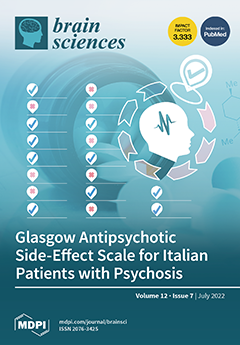Open AccessSystematic Review
Gaze-Contingent Eye-Tracking Training in Brain Disorders: A Systematic Review
by
Laura Carelli, Federica Solca, Sofia Tagini, Silvia Torre, Federico Verde, Nicola Ticozzi, Roberta Ferrucci, Gabriella Pravettoni, Edoardo Nicolò Aiello, Vincenzo Silani and Barbara Poletti
Cited by 6 | Viewed by 2676
Abstract
Eye movement abnormalities in association with cognitive and emotional deficits have been described in neurological, neurodevelopmental, and psychiatric disorders. Eye-Tracking (ET) techniques could therefore enhance cognitive interventions by contingently providing feedback to patients. Since no consensus has been reached thus far on this
[...] Read more.
Eye movement abnormalities in association with cognitive and emotional deficits have been described in neurological, neurodevelopmental, and psychiatric disorders. Eye-Tracking (ET) techniques could therefore enhance cognitive interventions by contingently providing feedback to patients. Since no consensus has been reached thus far on this approach, this study aimed at systematically reviewing the current evidence. This review was performed and reported according to PRISMA guidelines. Records were searched for in PubMed, Web of Science, and Scopus (1990–2021) through the following string: (‘Eye Tracking’ OR ‘Eye-Tracking’ OR ‘Oculomotor’) AND (‘Neuropsychol*’ OR ‘Cognitive’) AND (‘Rehabilitation’ OR ‘Training’ OR ‘Stimulation’). Study outcomes were thematically classified and qualitatively synthesized. A structured quality assessment was performed. A total of 24 articles were included, addressing neurodevelopmental (preterm infants and children with autism spectrum disorder, Rett syndrome, or ADHD;
N = 14), psychiatric (mood and anxiety disorders or alcohol dependence;
N = 7), and neurological conditions (stroke;
N = 3). Overall, ET gaze-contingent training proved to be effective in improving cognitive and emotional alterations. However, population heterogeneity limits the generalizability of results. ET gaze-contingent protocols allow researchers to directly and dynamically train attentional functions; together with the recruitment of implicit, “bottom-up” strategies, these protocols are promising and possibly integrable with traditional cognitive approaches.
Full article
►▼
Show Figures






